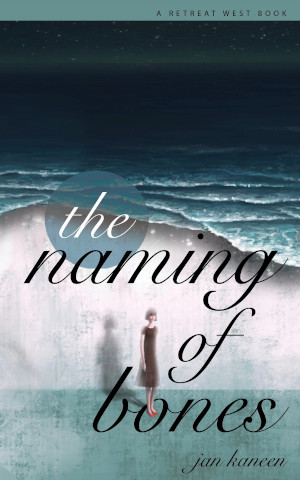 The beauty of this book is dazzling. From the first page, I felt myself being drawn into a work of art where light catches on grains of sand and waves hush continually. There’s a quietness to the prose that’s deeply beguiling. It makes you want to listen harder, to breathe in every word and nuance.
The beauty of this book is dazzling. From the first page, I felt myself being drawn into a work of art where light catches on grains of sand and waves hush continually. There’s a quietness to the prose that’s deeply beguiling. It makes you want to listen harder, to breathe in every word and nuance.
Dreamscapes, memories and make-believe all play their role, climbing into each other’s arms and laps until you can’t be sure where real ends and made up begins.
We commence in the middle of the night with a sound of singing, “soft and faraway.”
Jan Kaneen‘s narrator is in bed, just woken and “straining to hear.” In the following pages, it seems that straining to hear could sum up all her efforts – to identify, to gain clarity of a surrounding resonance that hums always somewhere just beyond reach of full comprehension.
Our location is a shoreline where a beachcomber is seen each day, whatever the weather. It’s a wonderful, wind-swept setting, and one that feels shaped by the narrator’s sense of grief. Kaneen sums up the mood and our narrator’s mood in two lines: “I favour wilder weather and stormier skies, and I only go outside on rainy days. I prefer to watch people rather than be with them, and the rain keeps them away.”
And yet, in dreams and long-distant memories our narrator appears to desire the exact opposite of this in the form of endless sunshine and affection.
A joy of language pivots throughout, from the “wobbly hot summer’s days” recalled from childhood, to the incantation of bones’ names reeled off to keep anxiety at bay.
Time is fluid, shivering different moments in and out of focus, as in a passage on picking forget-me-knots as a child: “I could pick millions and millions and have a bunch so big my hands wouldn’t fit around their stems, that would smell faintly sweet like the talcum powder on the bathroom windowsill at Wayside Cottage, that no-one ever uses and that will still be there long after Granny is dead.”
It’s a mutability that makes it seem all times live alongside us, visible only in certain lights, and only if you look askance. It feels right in the rhythm of Kaneen’s words, which blend love and lament, while weaving recollections of her granddad’s tales about Isle of Man faeries that can never be named directly with the casual violence of childhood pecking orders and adult musings on the temptation “to just keep on walking” into the depths of the sea: “It wouldn’t hurt a bit.”
As our narrator selects the right pen to make her torrents of words legible, I found myself relieved she’d found a form of release for her evident pain, and rooting for her recovery.
In ‘Historical Elision’, we discover the nub of honesty underpinning this book – that if we’re not allowed to shape our sorrows through expressing them, we risk surrendering to them.
This is a book about the power of words, and of silence; how naming something can both remove and restore its potency. And at the end it’s about finding ways to reclaim that power.
It feels apt that the final chapter, ‘The Waltzers’ is a wistful re-imagining of what could have been. Kaneen shows us that even on days when the sea fails to deliver what we crave, we can reinvent the shards that wash up and turn them into what we need.
The Naming of Bones by Jan Kaneen is published by Retreat West and is available to buy from www.retreatwest.co.uk/the-naming-of-bones/
This book was given to me in exchange for a fair review.
What are you reading? I’d love to know. I’m always happy to receive reviews of books, art, theatre and film. To submit or suggest a book review, please send an email to judydarley (at) iCloud.com.
